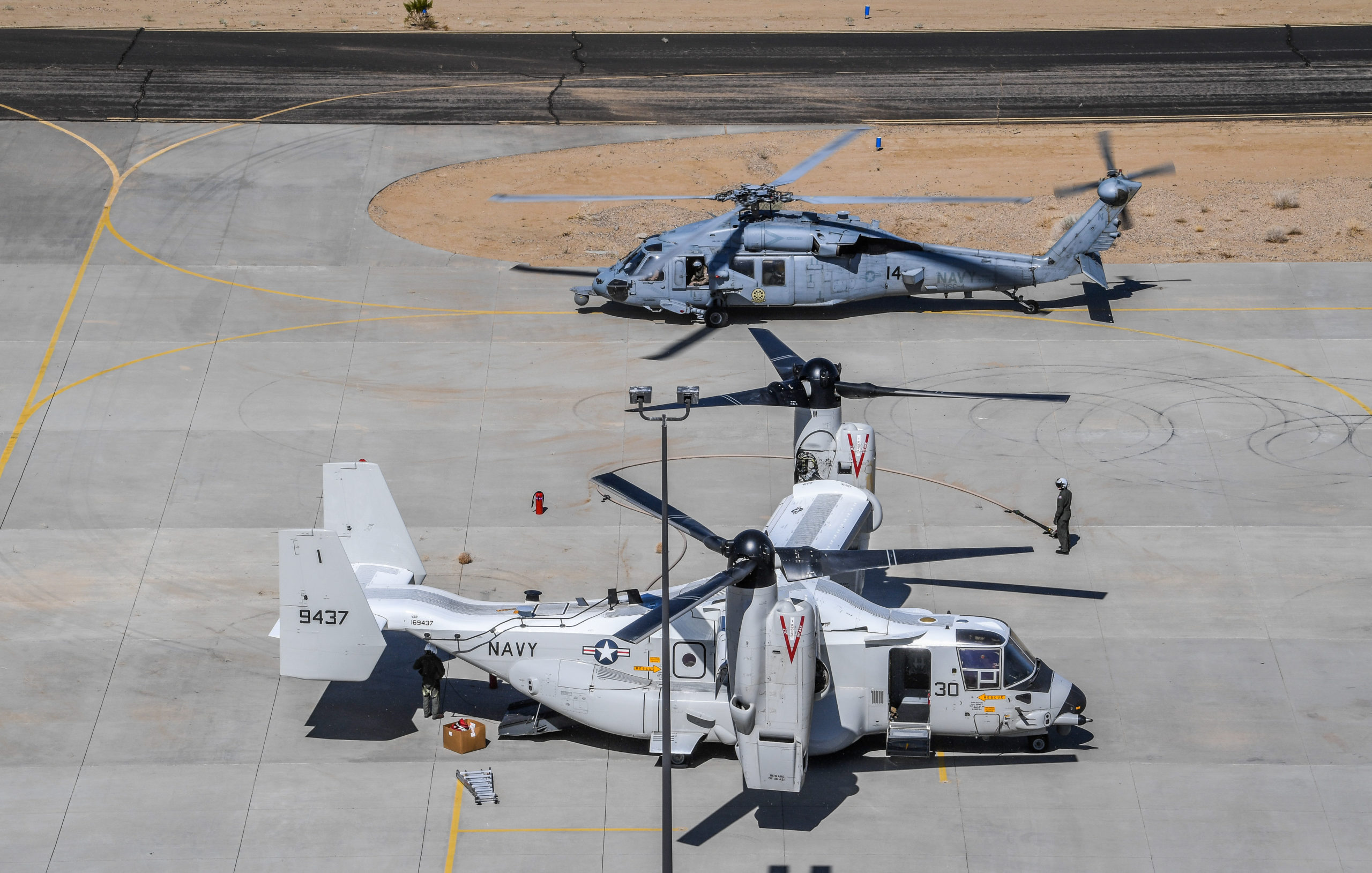A great place to go to approach ways to answer that question is to visit The Naval Aviation Warfighting Development Center or NAWDC which is best known to the public as “Top Gun.”
When I last visited NAWDC in 2020 which I did twice in that year, it was very clear from the visits and the discussions, that there was significant rethinking underway with regard to how Naval aviation could interact with the kind of fleet innovation necessary for effective distribted maritime operations.
The theme of integratability beyond the carrier air wing is a key one being worked at NAWDC.
As the head of NAWDC at the time of my visit, Rear Admiral Brophy, put it: “From a training standpoint, we work from the perspective of ‘it is not going to be a carrier strike group that wins the next fight on its own, it’s going to be an integrated joint force that wins the next fight. We’ve really broadened our aperture. Everything we do here now is based off of a single lens: does it move the needle for great power competition or not?”
A measure of the change at NAWDC has been the generation of working groups based at NAWDC that reach out to the fleet to devise and implement new ways to operate in the evolving strategic situation. COVID-19 slowed down this process, but the trajectory is clear. For example, in the first quarter of 2020, NAWDC sponsored work with the other Navy warfighting centers to address the question of fleet-wide TTPs to execute maritime strike. The purpose is to think beyond the classic airwing focus to a wider integratable air wing in support of fleet-wide operations than simply relying on U.S. Navy operated platforms.
During my visit, I had a chance to talk with a number of the Departments working specific aspects of air wing training. There was clearly much re-thinking going on driven by the coming of the F-35 among other drivers of change. One of the most important take-aways from the visit was to learn more about MISR officers, which highlights a significant change in the fleet towards understanding the broader role of ISR in supporting fleet and joint operations.
But one question I asked the various Department heads was: where does the CMV-22b fit in?
There is a rotary wing department; would it be there?
Perhaps, but the officers I spoke to got the core point – this “logistics” asset was more than that. How could the CMV-22b drive innovation for the fleet and how might it evolve in ways benefiting from broader fleet innovation?
The arrival of the MISR officers and the CMV-22b provide an example of such innovation which might happen.
This is what I wrote after my July 2020 visit to NAWDC:
“There is another aspect of the coming of MISR to the fleet which could have a significant impact on operational capabilities beyond what the head of the MISR program discussed. And that flowed from conversations at lunch with the MISR course participants.
“There is a clear opportunity to add passive sensing to platforms operating within the force. For example, the CMV-22Bs will fly to the fleet for the logistics function, but why not place passive sensors on the aircraft to scoop up ISR information which can be distributed to an appropriate functional area?
“For example, the Romeo, P-8 and Triton communities are working to shape more effective integration. Clearly, MISR officers will know that ISR dynamics within that functional area and might be the perfect players to suggest what passive sensing on the CMV-22B might best provide to that force package or to one of the elements within that package.”
When one is operating in a contested environment, not only are the logistics challenging, but getting the right information from a fluid combat environment is crucial as well.
The CMV-22b certainly enables the first but could also provide inputs for the second.
For my NAWDC interviews, see the following:
Featured photo: A MH-60S Knighthawk helicopter assigned to the “Black Knights” of Helicopter Sea Combat Squadron (HSC) 4, stationed in San Diego, is refueled by a Navy CMV-22B Osprey from the “Titans” of Fleet Logistics Multi-Mission Squadron (VRM) 30. The CMV-22B is the U.S. Navy version of the Osprey, a multi-engine, dual-piloted, self-deployable, medium lift, vertical takeoff and landing (VTOL) tilt-rotor aircraft.
The Air Delivered Ground Refueling (ADGR) evolution was a first for HSC 4, en route to Naval Air Station Fallon. Air Wing Fallon is part of the predeployment training cycle for Navy’s carrier air wings. HSC-4, along with VFA-2, VFA-192, VFA-113, VFA-147, VAQ-136, VAW-113, and HSM-78 comprise CVW-2 and are detached to NAS Fallon in order to sharpen their warfighting readiness through a rigorous 5-week curriculum.
The training conducted during Air Wing Fallon drives air wing integration and ensures that all CVW-2 squadrons are ready to conduct the full range of military operations when they deploy later this year. HSC 4 provides vertical lift search and rescue, logistics, anti-surface warfare, special operations forces support, and combat search and rescue capabilities.
(U.S. Navy photo by Chief Mass Communication Specialist Shannon Renfroe/Released)


